As Luke Adams explains in our glossary entry, the two-way contract was introduced in the NBA’s 2017 collective bargaining agreement, with additional changes ratified in the 2023 CBA. Players who signed two-way deals before the season began will earn $578,577 in 2024/25, half of the rookie minimum.
There are certain stipulations for players on two-way contracts. They are not eligible for the postseason, and if a team has a full 15-man standard roster, they can only be active for up to 50 games. In cases where a team has fewer than 15 players on standard contracts, two-way players are even more restricted in how many games they’re permitted to be active.
Three players on two-way contracts have already been converted to standard deals in ’24/25 — Scotty Pippen Jr. and Jay Huff each received four-year deals from the Grizzlies, who used part of their non-taxpayer mid-level exception to complete the transactions. The Knicks also promoted rookie big man Ariel Hukporti a two-year standard contract using the minimum-salary exception.
Here are five more players on two-way deals who are candidates to be promoted to standard contracts.
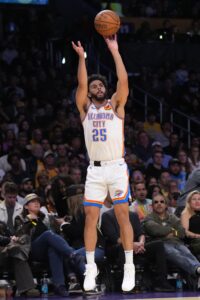 Mitchell is arguably the strongest candidate to be converted to a standard deal. There’s also a straightforward pathway for Oklahoma City to complete the transaction — the team would only need to waive rookie big man Branden Carlson, who is on a non-guaranteed standard contract.
Mitchell is arguably the strongest candidate to be converted to a standard deal. There’s also a straightforward pathway for Oklahoma City to complete the transaction — the team would only need to waive rookie big man Branden Carlson, who is on a non-guaranteed standard contract.
A 6’5″ guard from Belgium, Mitchell was the No. 38 overall pick of June’s draft after starring in college at UC Santa Barbara. Not only has the 22-year-old been active for every game thus far for the Thunder, who lead the Western Conference with a 19-5 record, he has also appeared in all 24 contests as a rotation regular, averaging 5.6 PPG, 1.5 RPG, 1.7 APG and 0.9 SPG, with a shooting line of .478/.418/.800 in 16.0 MPG.
The No. 51 overall pick of the 2021 draft, Boston spent his first three seasons on a standard deal with the Clippers, who let him walk in free agency over the offseason. He wound up signing an Exhibit 10 deal with San Antonio for training camp, was released before the season started, and was claimed off waivers by New Orleans and converted to a two-way deal.
It turned out to be a shrewd decision, as the 23-year-old has played a significant role for the injury-ravaged Pelicans, averaging 12.0 PPG, 3.7 RPG, 3.3 APG and 1.5 SPG in 23 games, including 10 starts (27.5 MPG). While Boston hasn’t been the most efficient scorer — his shooting slash line is .436/.323/.851, with a 53.8% true shooting percentage — he’s one of the few (active) players on the roster who can create offense for himself and others.
New Orleans only has 14 players on standard contracts right now and has shown a reluctance to carry a 15th man due to luxury tax concerns, so the Pelicans are unlikely to consider a promotion for Boston until he has reached his game limit or the team has ducked below the tax line with a trade.
An undrafted rookie out of Ohio State, Battle has been active for 25 of Toronto’s 26 games, averaging 5.8 PPG and 2.0 RPG while shooting 44.0% from long distance in 24 appearances (13.6 MPG).
Although there’s a pathway to convert the 24-year-old sharpshooter, it would require the Raptors to cut a veteran — perhaps big man Bruno Fernando, who is on a non-guaranteed contract. There’s no rush for Toronto to make a decision on Fernando until the Jan. 7 deadline though, so if Battle does get promoted, I’d expect it to occur later in the season.
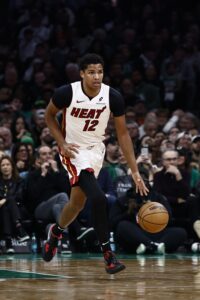 At first glance, Smith doesn’t seem like the most obvious candidate to have his two-way contract converted. The 26-year-old missed most of last season with a torn ACL, and has only appeared in 10 games thus far in ’24/25.
At first glance, Smith doesn’t seem like the most obvious candidate to have his two-way contract converted. The 26-year-old missed most of last season with a torn ACL, and has only appeared in 10 games thus far in ’24/25.
However, he has played a major role off the bench lately. As Anthony Chiang of The Miami Herald writes, Smith logged a career-high 34 minutes in Thursday’s victory over Toronto, including the entire fourth quarter for the third straight game, earning praise from team captain Bam Adebayo.
“He’s just making the right plays every time down the court,” Adebayo said of Smith’s impact.
The tricky part about converting Smith is the Heat have a high payroll, which is why they’re only carrying 14 players on standard contracts. They’ll likely wait until after the trade deadline so that they don’t surpass the second tax apron and limit their trade options, but if Smith keeps playing like he has been lately, it seems like a matter of when, not if, he gets promoted.
[UPDATE: The Heat’s impending trade of Thomas Bryant could open the door for Smith to be promoted sooner rather than later.
Second-year forward Miller rounds out our five-player list. In 14 appearances in ’24/25, the 2023 second-round pick has averaged 7.9 PPG, 2.5 RPG and 1.3 APG in 16.3 MPG, with a shooting line of .467/.304/.773. Those numbers might not jump off the page, but Miller is a solid, versatile defender who can drive, draw fouls, and create for himself and others.
With Derrick Jones (hamstring strain) out for at least a couple weeks and Kawhi Leonard (knee) still ramping up to make his season debut, Miller has a major opportunity to make himself an indispensable part of head coach Tyronn Lue‘s rotation.
In order for Miller to be promoted, the Clips would need to either waive someone from their standard 15-man roster or make a trade. P.J. Tucker is the team’s most obvious candidate to be traded or released.
Some other two-way players to keep an eye on:
- Isaac Jones, F/C, Kings
- Jared Butler, G, Wizards
- Jamal Cain, F, Pelicans
- Trey Jemison, C, Pelicans
- Quenton Jackson, G, Pacers
- Enrique Freeman, F/C, Pacers
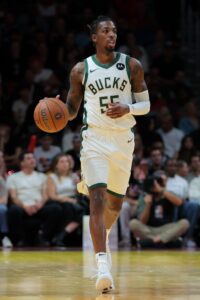 Delon Wright ($3,003,427)
Delon Wright ($3,003,427)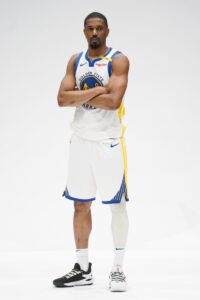 But the aggregation rule looks like one important reason why the Warriors and Nets moved quickly on
But the aggregation rule looks like one important reason why the Warriors and Nets moved quickly on 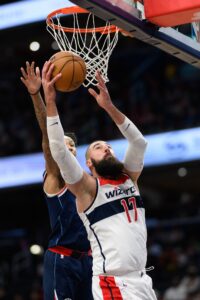 However, it also includes some players whose names have already popped up in trade speculation in the months since they were signed, such as Wizards center
However, it also includes some players whose names have already popped up in trade speculation in the months since they were signed, such as Wizards center  Mitchell is arguably the
Mitchell is arguably the  At first glance, Smith doesn’t seem like the most obvious candidate to have his two-way contract converted. The 26-year-old missed most of last season with a torn ACL, and has only appeared in 10 games thus far in ’24/25.
At first glance, Smith doesn’t seem like the most obvious candidate to have his two-way contract converted. The 26-year-old missed most of last season with a torn ACL, and has only appeared in 10 games thus far in ’24/25. During the first half of a season, the math on non-guaranteed contracts is a little trickier, since the guaranteed portion of a player’s salary increases for each day he’s on the roster.
During the first half of a season, the math on non-guaranteed contracts is a little trickier, since the guaranteed portion of a player’s salary increases for each day he’s on the roster.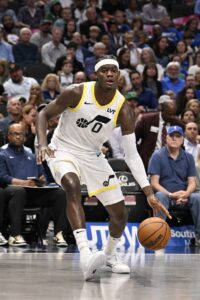 Hendricks
Hendricks